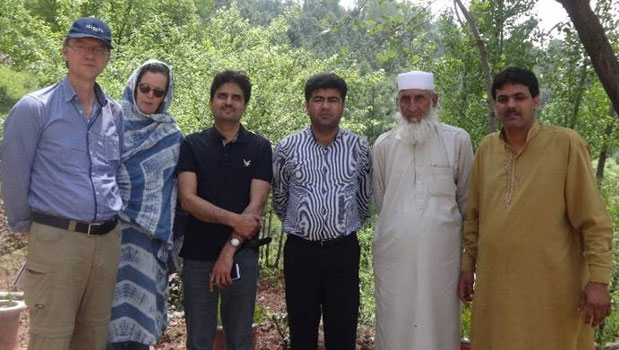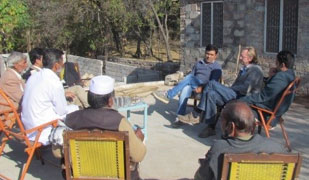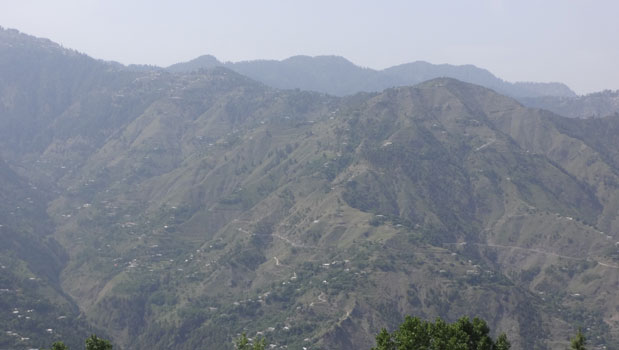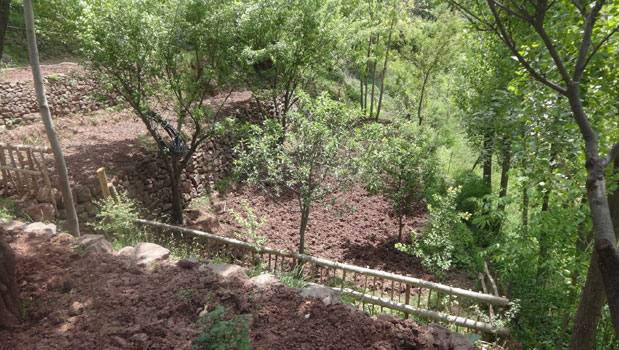By Aneel Piryani, Naveed Mustafa, Bashir Ahmad and Philippus Wester

Murree Tehsil of District Rawalpindi is approximately 50 km from the twin cities of Rawalpindi and Islamabad. This area was famous for fruit production such as apples, apricots, walnuts, and Asian pears in abundance. However, fruit production has strongly decreased in the past decades, and it appears climate change could be one of the reasons.
A HI-AWARE team visited Murree Tehsil of Rawalpindi, Pakistan, and interviewed a number of elderly farmers to understand their perceptions of climate change. The main purpose of the visit was to discuss the climate change issues faced by farmers, and the indigenous coping mechanisms. The major problems reported by farmers were changes in snowfall, temperatures and rainfall patterns, which have adversely affected the farming system in this area, making the poor farmers more vulnerable.
Changing pattern of snowfall
According to the farmers of Rawat Union Council of Murree, there has been a change in the quantity and timing of snowfall in the area. Some farmers said that earlier they used to get snowfall from the end of October to the end of the April. Nowadays, the snowfall starts in January and lasts up to the end of March, which shows that the period of snowfall has shortened by almost three months. This reduction in snowfall has led to the farmers’ not being able to cultivate crops on time. Per season, the depth of snowfall in the past used to be 6-7 feet, but now it is only 2-3 feet. This area was once famous for its produce, such as apples, peaches, apricots, greengages (aloocha) and different varieties of pears, but owing to irregular snowfall patterns, the cultivation of these fruits has suffered badly. The reduced snowfall and rainfall have also adversely affected water resources in the area and downstream areas – the springs are going dry.
 |  |
Local farmer explaining how snow patterns have been changed over the decades
Photo: Aneel Piryani/ICIMOD
Changing temperature is adversely impacting agriculture
The farmers have also observed changes in temperature. The summers are getting cooler. For example, May used to be hotter, but since the last five years it has been getting cooler, especially during night time. Oppositely, the winters used to be colder than it is at present. Usually, the cold weather used to start from the end of October, but now it starts in the end of December. This change in temperatures is affecting the lives of the farmers and their agricultural practices. The colder weather has led to more respiratory diseases like coughs, colds, fevers etc.
The changes in temperature have, in fact, had serious impacts on agricultural practices. Previously, farmers used to cultivate potatoes, wheat and maize, but nowadays the weather has become unsuitable for the cultivation of these crops. Because of these adverse effects on their farming practices, migration in search of labour out of the area, has now become common. Farmers say that the changes in temperature may be due to the deforestation and urbanization in these areas.
This area, the only hill-station close to Islamabad and Rawalpindi, attracts tourists, and the milder summer temperatures has led to an increase in tourist inflows. Presently, urbanization is increasing to accommodate the increased tourists and seasonal migrants, who migrate to the area during the summer.
 Dried hills of Murree
Dried hills of Murree
Photo: Aneel Piryani/ICIMOD
Labor migration
The young generation of farmers who work in the agricultural sector prefer to migrate to nearby towns and big cities like Islamabad and Rawalpindi, and even abroad, to find jobs in other sectors. The main reason for this out-migration is climate change adverse effects on agriculture (staple crops, vegetables and fruits). The farmers told us that the time invested in agriculture is not commensurate with the agricultural output and that they can no longer survive on farming. The young people who migrate to the big cities and towns make better earnings in the new places and they can provide better opportunities there for their children. They would like to provide better education opportunities for their children, which are not available in the villages.
Changing rainfall patterns
The average rainfall during the monsoon is almost the same but the duration of rainfall has decreased. The intensity of rainfall has also increased, leading to flash floods in these areas. These flash floods damage the agricultural land and infrastructure. Rainfall in other seasons is increasing, which is also creating problems for the local farmers in cultivating their land. Previously, women used to contribute to the agricultural sector, but nowadays they do not participate in agricultural activities, which can be another reason for the farmers’ giving up altogether on agriculture. The labour cost required for agriculture has increased, and small and medium-level farmers cannot afford to engage in farming owing to reduced output.
 One of the farmers built this wooden fence for protecting crops from wild animals
One of the farmers built this wooden fence for protecting crops from wild animals
Photo: Aneel Piryani/ICIMOD
Obstruction by wild animals and invasive plant species
The farms are routinely ravaged by the wild pigs in the area. According to the farmers, these pigs had been allowed to roam free by government agencies. The farmers requested the government agencies to control them, but no proper measures to control the pigs have been taken. The pigs foray into the farms during the night, but no human casualties have been reported in the area. Two types of invasive species that were brought to area back in 1963 have created problems for cultivation. One of the plants is the poplar tree. This tree has long roots and requires a lot of water and is thus not suitable for this ecology. The long roots draw so much water that they convert the cultivated land into barren land.
